The Wignore is a pub, Jim, but not as we know it. It is attached to the Langham Hotel, though it has its own dedicated entrance. The dining room looks like a particularly fine Victorian tavern, but until July 2017 this room as was actually part of the hotel spa, which in its past life had been a bank before the hotel conversion. It has been impressively converted into the appearance of an English pub, complete with green leather banquette seating and central chandelier. The head chef is James Hawley, who trained at Galvin Bistro and La Chapelle, and then worked at Roux at The Landau before moving to the Terroir group, working at The Green Man & French Horn as well as Brawn, before taking up his position as head chef here. The executive chef is Chris King, who oversees the cooking throughout The Langham London.
The menu too, is the kind of pub menu you might get in an episode of The Twilight Zone. It has dishes that at first sight appear familiar, but are fancier: a Scotch egg is a curried version, and a toasted cheese sandwich is a huge affair with sourdough bread, pickles, mustard, three different cheeses and appears topped with a cast iron bacon press to keep it warm. Beers are in part from a craft brewery in Bermondsey called Brew by Numbers, and there was a short wine list of 31 labels ranging in price from £21 to £145. The median wine price was £35 with a fairly hefty average markup of 3.5 times retail price. There are a couple of trivial errors, for example the Indomita Nostros Merlot Gran Reserva was misspelt as “Nostro”, but this is nit-picking. These days in a London wine list I am pleasantly surprised to see vintages and growers shown. Sample bottles were Wairau River Sauvignon Blanc 2017 at £30 for a bottle that can be found in the high street for £11, Chapel Down Three Graces at £51 compared to its retail price of £26, and Meursault Limozin Rene Monnier 2011 at £90 for a bottle that will set you back £37 in a shop.
At my first meal here, masala Scotch egg (£6.25) was a sophisticated affair, the blanched quail egg wrapped in sausage meat and studded with roasted vermicelli pasta that is deep fried, forming a kind of nest around the egg. This rested in a gently spiced masala dahl sauce and minted yoghurt. The contrast of textures with the crisp vermicelli was interesting, and the spices nicely lifted the flavour of the meat (14/20).
Another gussied up version of a classic dish was a coronation chicken roll (£17). This came with coleslaw in a superior quality bread roll along with a neat pile of onion rings. Coronation chicken is quintessentially British, invented n 1953 by Rosemary Hume and Constance Spry for Queen Elizabeth II’s Coronation lunch for foreign dignitaries. There are some elaborate versions to be found, such as John William’s glorious rendition at The Ritz, but this was certainly very enjoyable, the coleslaw and spices enhancing the flavour of the chicken (14/20). This was not cheap but the portion was vast, and would be a meal in itself. On the side, triple cooked chips were excellent, with a crisp outside coating and properly cooked inside. They were seasoned with “Bloody Mary salt”, an elaborate recipe in itself containing tomato powder, coriander seeds, Maldon sea salt, fennel seeds, Sichuan pepper, ginger, chilli star anise, smoked paprika and nigella seeds. The overall effect is perhaps a touch salty, though I like chips this way (15/20).
Even the coffee here is better than you would expect, excellent espresso from Union Roasters, one of the best London suppliers. Service was very good indeed. The bill came to £36 for one with just water to drink. If you had three courses and coffee and shared a modest bottle of wine then a typical cost per head might come to around £55. On this brief visit I was very impressed with The Wigmore, which is serving pub food dishes elevated to a high standard.
I had two further visits here in quick succession so that I could try a wider variety of dishes. That cheese toastie tasted as good as it looked, using bread from a roasted onion bloomer loaf with onion seeds. This is spread with Dijon mustard, and a trio of cheeses are in the filling: Ogleshield, Raclette, and Montgomery Cheddar, all mixed with diced red onion and cornichons. The cooking is carried out on the plancha, the hot iron press applied so that each sandwich arrives with the cheese still melting. This was a joy to eat – to be sure, it is a toasted sandwich, but one elevated to a higher level (14/20).
Smoked ham croquetas used finely chopped Wiltshire oak smoked ham and prosciutto from a supplier in Hackney. Fat from the prosciutto is rendered and used to fry the ham, and then flour and milk are added to form a béchamel. Once this has cooled then a combination of Mrs Kirkhams Lancashire cheese and Ogleshield cheese is added, and the croquetas are deep fried with a seasoning of Basque pepper. The overall effect was an unusually deep flavour, much more so than typically found in this dish. Again this is probably a long way from the croquetas at your local tapas bar (14/20).
Spring lamb pie came with wild garlic mash, and mint sauce. The pie is made with laminated suet pastry, the lamb filling containing slow-braised shoulder and leg to give a contrast in texture, with a sauce of the braising liquid with the vegetables it was cooked with (turnip, carrot, onion and garlic) passed through a sieve. This is seasoned and then diced carrot, onion and turnip are cooked in the sauce and added to the filling. The mash is made with wild garlic butter and finished with chopped wild garlic, the mint sauce being made from scratch using fresh mint, vinegar and sugar. The pastry was excellent, the filling very enjoyable (14/20).
Rabbit confit had rabbit leg with polenta, purple sprouting broccoli, anchovy and garlic sauce. The rabbit leg is salted with a confit salt made with thyme, garlic, rosemary, peppercorns and bay leaf, then cooked in duck fat for several hours. The yellow polenta is finished with chopped thyme and Parmesan. The broccoli was cooked in a butter emulsion with a little chilli flake. The sauce is a take on bagna cauda, the traditional Italian dipping sauce. The rabbit avoided any issues of dryness that so often afflicts this meat and was tender, going well with the broccoli (14/20).
Artichoke tartare was another dish that was a lot more elaborate than its simple menu description. Globe and violet artichokes were cooked in white wine, lemon juice and olive oil and diced. Some more globe artichoke was crushed and mixed with cooked shallots, then seasoned with dried wild oregano, marjoram, niora chilli, and blood orange zest. Finally, the violet artichokes were tossed in semolina and fried and garnished with blood orange and grumolo (a kind of chicory) leaf. This was an interesting combination of textures, the acidity of the blood orange a good foil for the fried artichokes (13/20).
Cauliflower cheese and cauliflower bhajia came with mango chutney. The mango chutney was made from scratch and was a distinct notch up from the version you find at your local curry house. It used Alphonso mangos from India, which are particularly fragrant, lending their flavour to the chutney. By now you will expect the cauliflower to be quite elaborately treated, and you would be right. The head of the cauliflower is slow-cooked whole, steamed and finished on the plancha. The trimmings are used to make the bhajia mix along with onion, garam masala, garlic powder, nigella seed and toasted ground cumin, bound up using gram flour and tempura flour. The remaining cauliflower was made into a spiced puree, and finally there was a cheese sauce using English mustard, Worcester sauce and Isle of Mull cheddar. Again, the overall effect was a long way from the cauliflower cheese at your local pub. The mix of textures and the use of spices lifted the dish well beyond the ordinary, and the mango chutney was really special (easily 14/20).
Desserts, too, are interesting here. Treacle tart used golden syrup, egg, butter cream and lemon zest, all encased with sweet pastry with orange marmalade. The pastry was very good indeed and the overall effect was much less heavy that it might have been – a classy piece of cooking (15/20). Bread and butter pudding was also very good, brioche mixed with custard and cinnamon, combined with raisins soaked in brandy and a little rum. This was delicate and fluffy, the raisins adding richness (14/20).
At my third meal the bill came to £36 with just water to drink, with service again being very good. Overall I was very impressed with The Wigmore, having had a chance to try a sizeable chunk of its menu offerings across the various meals. It succeeds in taking classic pub dishes and genuinely improving on them, not just adding gimmicks for the sake of it. This is the kind of pub food that you hope for in your dreams but hardly ever turns up in reality.
Further reviews: 21st Sep 2021










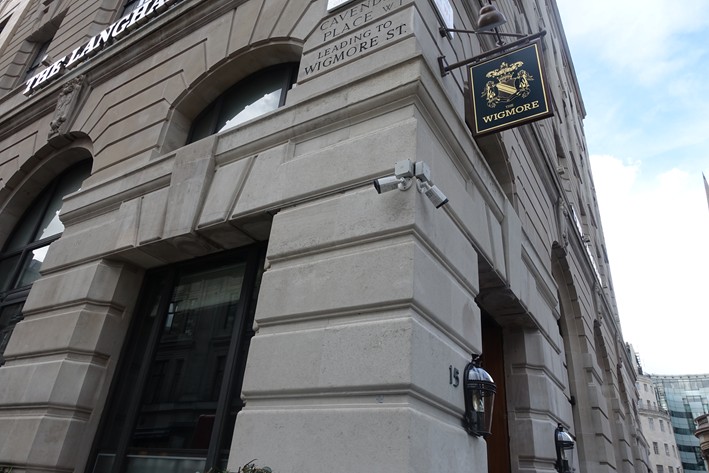
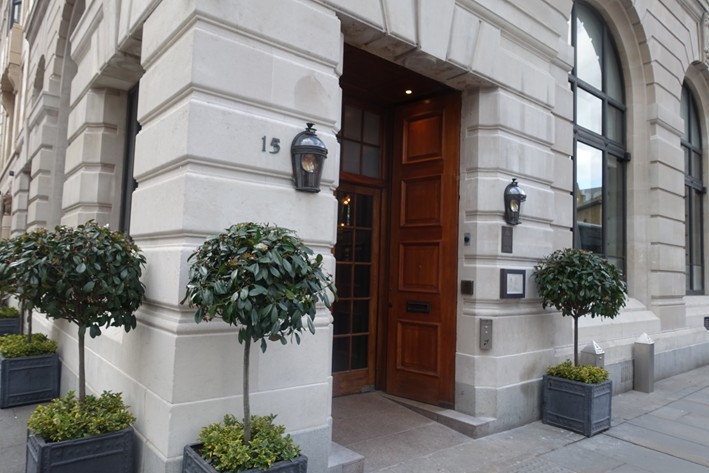
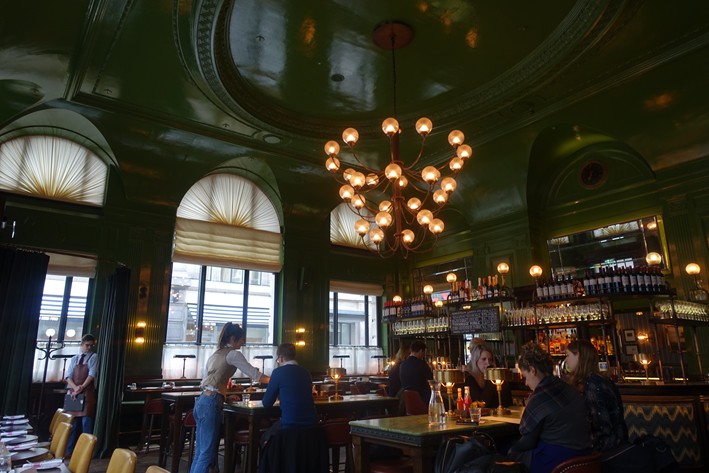
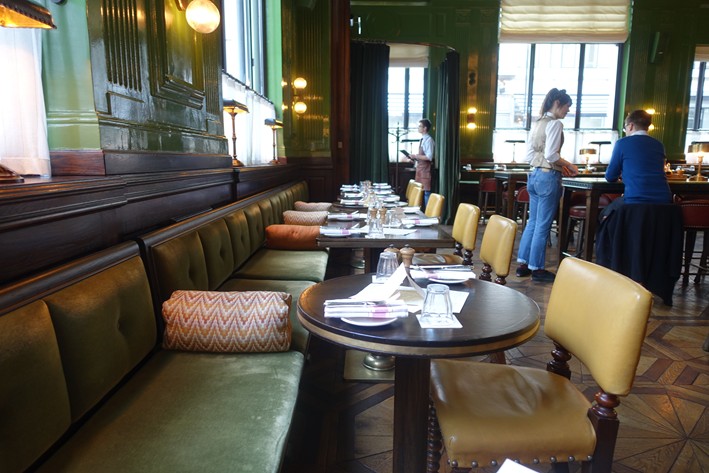

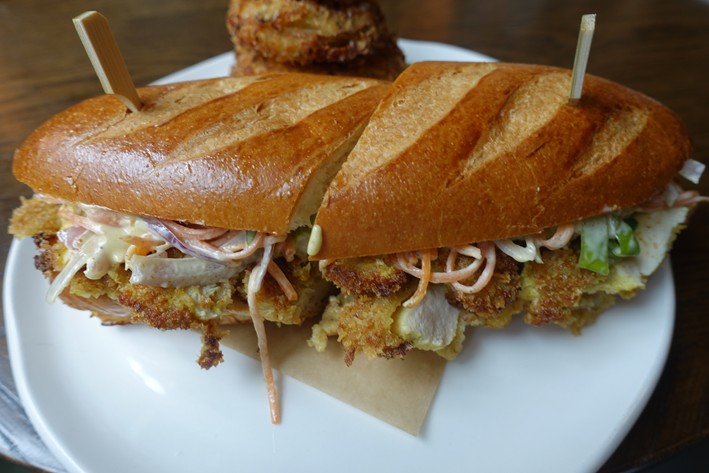
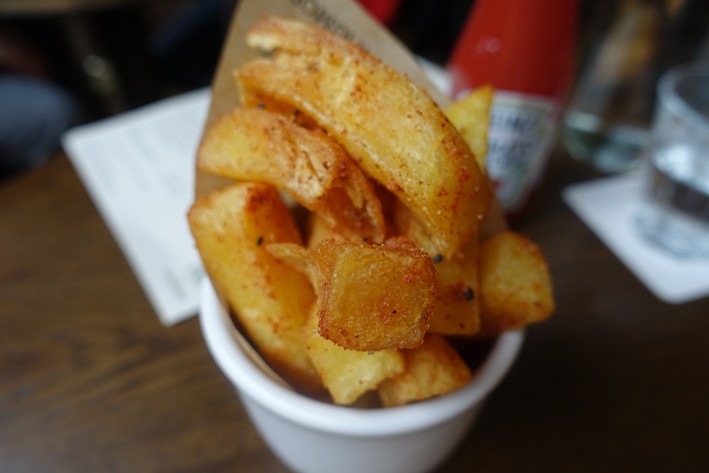

Add a comment
Thank you for submitting your comment, this will be checked and added to the website very soon.
User comments